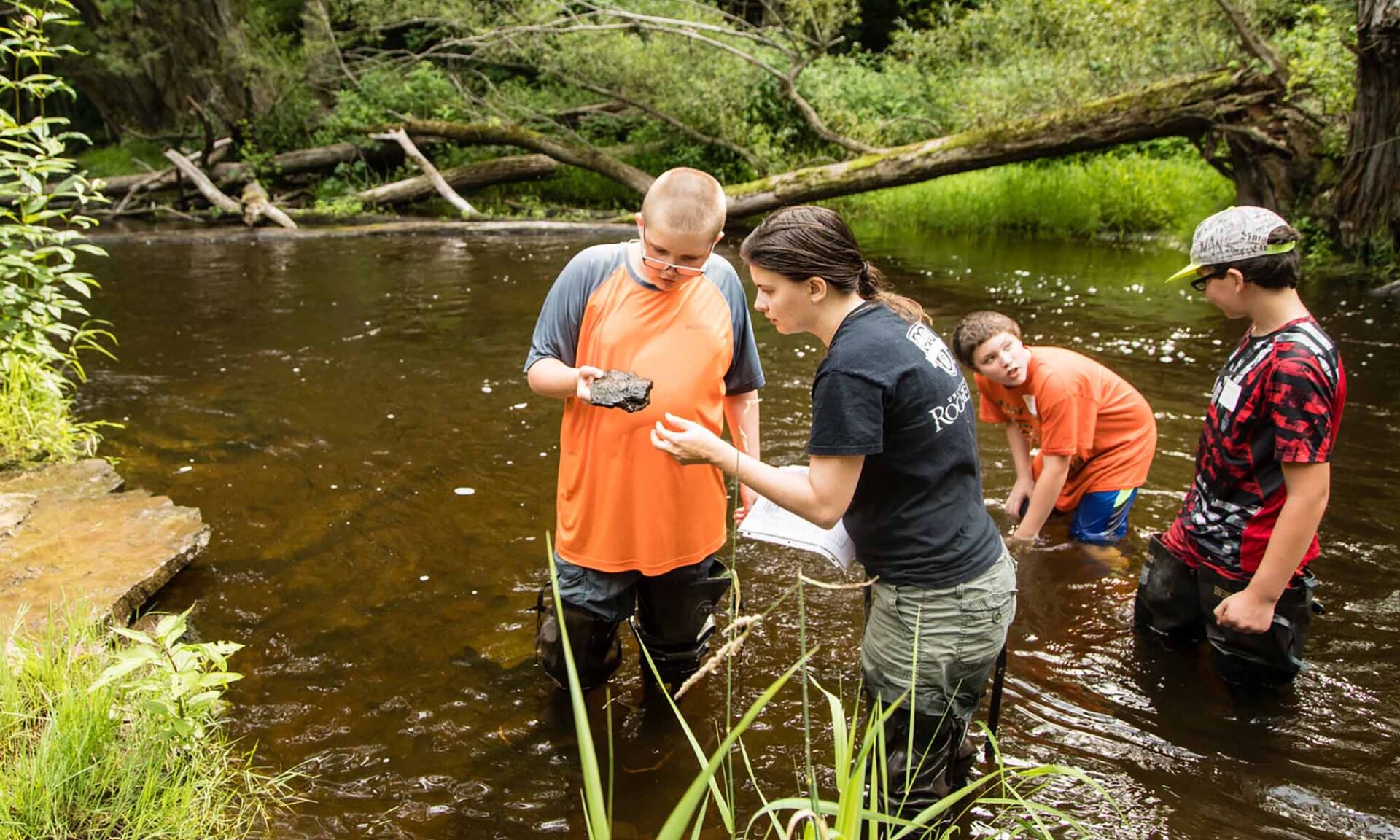How the Warner School of Education’s wide-ranging programs are strengthening the educators, students, and communities at the heart of rural New York.
Across rural America, schools serve as the heart of their communities—centers of learning, connection, and opportunity. Educators wear many hats, fostering close relationships with students and families while adapting creatively to meet a range of learning needs. Yet these same communities also face persistent challenges, including declining enrollment, limited resources, and ongoing educator shortages, all of which can limit rural students’ opportunities.
According to the National Center for Education Statistics, rural public schools serve roughly 20 percent of America’s students. Despite their vital role, rural education has often been overlooked in national education research and policy. The Warner School of Education & Human Development at the University of Rochester is working to change that—partnering with districts; preparing and supporting teachers, counselors, and leaders; and championing innovation and access where it’s most needed.
“At Warner, we believe in the power of education to transform lives,” says Melissa Sturge-Apple, interim dean of the Warner School and a professor in the Department of Psychology. “This belief is especially important in rural areas, where schools are the foundation of community life yet often face challenges tied to isolation and limited resources. Our faculty, students, and partners are dedicated to helping these communities flourish through education, leadership, and innovation.”
Through longstanding partnerships and programs, Warner faculty members and researchers support rural communities in many ways, including collaborating with rural partners to expand STEM teaching capacity, strengthening professional development, and growing the school-based mental health workforce. Even in the summer, Warner’s science camp brings authentic, hands-on learning to rural students, nurturing curiosity, confidence, and community pride.
Strengthening mental health support
Hennessey Lustica, an assistant professor of counseling and human development, leads the Wellness Workforce Collaborative (WWC), a regional initiative—which will soon expand statewide—addressing the critical shortage of mental health support in rural schools in the Finger Lakes and Monroe County regions.
Launched in 2020 at the onset of the COVID-19 pandemic through the Mental Health Demonstration Project grant awarded to the Sodus Central School District, WWC began by increasing the pipeline of social workers in rural districts. Under Lustica’s leadership—first as a Warner doctoral student and now as a faculty member—the program expanded to include counselors, psychologists, and licensed mental health counselors, creating a multidisciplinary approach to student wellness. Partnering with institutions like Warner, WWC established a robust internship program that trains graduate students while placing them directly in rural schools to provide much-needed services.
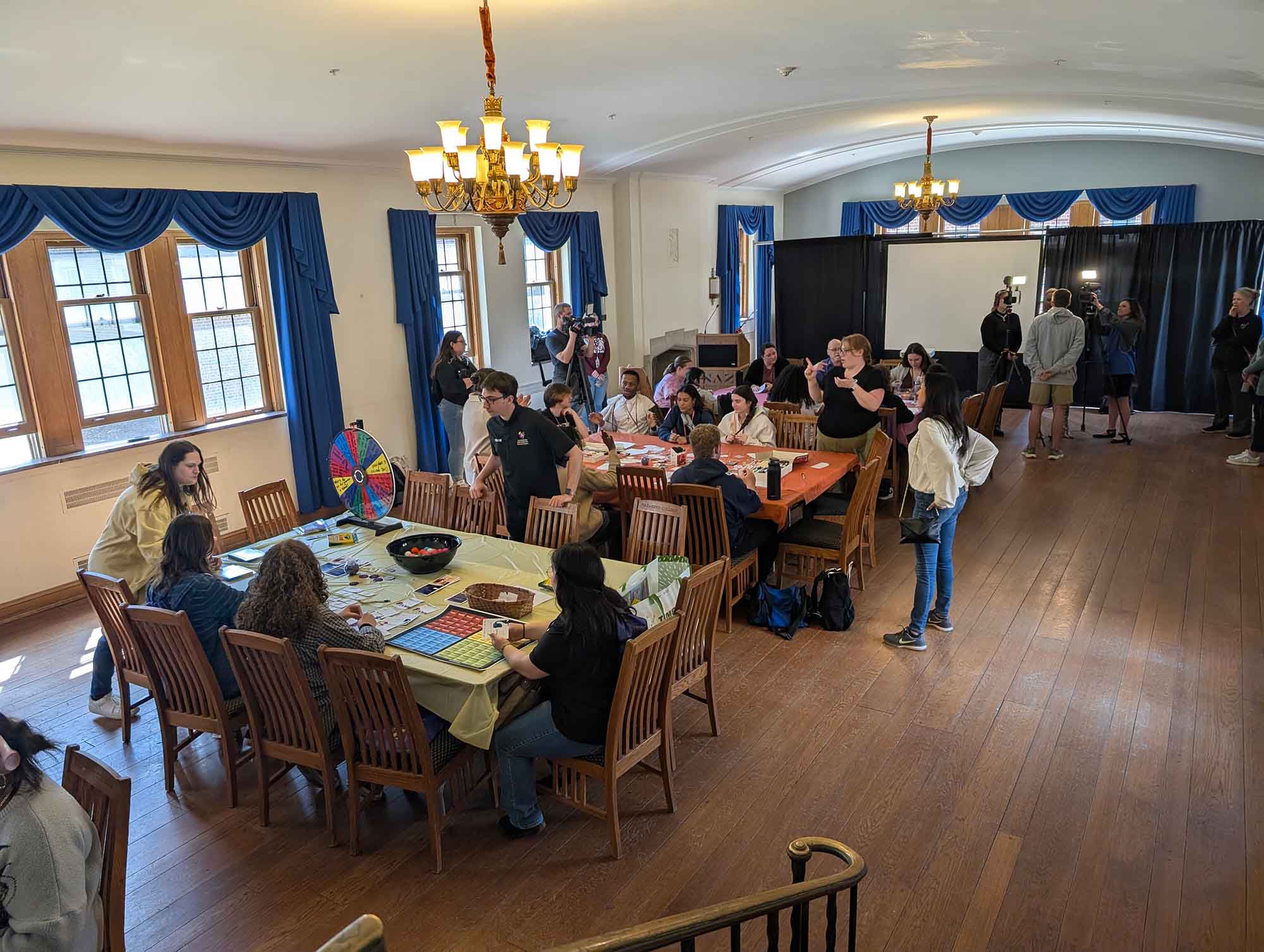
“We teach our interns to collaborate across disciplines to maximize the services kids receive,” says Lustica. “Our model breaks down silos and fosters teamwork to better serve students with social-emotional supports in under-resourced communities.”
WWC addresses the challenges of rural schools, where provider-to-student ratios often fall far below national recommendations. By funding internships and stipends for interns and supervisors, WWC makes mental health services accessible to students who might otherwise face transportation or provider barriers. To date, the program has successfully placed more than 175 interns in rural schools—nearly 90 percent of whom were hired by their districts—significantly easing the workforce shortage.
Beyond recruitment, WWC focuses on retention and sustainability. It offers professional development tailored to rural providers, quarterly roundtables on evidence-based practices, and free continuing education units (CEUs). A coaching program pairs seasoned professionals with newcomers to reduce burnout and build confidence. The innovative “Grow Your Own Mental Health” curriculum introduces high school students to mental health professions through dual-credit courses, sparking early interest in the field.
Looking ahead, WWC aims to expand statewide through partnerships with BOCES and the New York State Office of Mental Health, ensuring this vital work continues.
“When K–12 schools, higher education, and community agencies come together like this, we can help a lot of kids and families,” Lustica says.
Preparing school leaders
Warner has been a driving force in preparing school leaders to serve rural communities across New York through accessible programs. Its School Building Leader (SBL) and School District Leader (SDL) certifications equip educators with the credentials and skills to lead effectively in K–12 settings.
“We believe deeply in Warner’s mission to prepare practitioners and researchers who make the world more just and human,” says Brian Brent, the Earl B. Taylor Professor and cochair of educational leadership. “To do that, we need to reach candidates where they are.”
Warner’s Wayne-Finger Lakes Institute, established two decades ago with Wayne-Finger Lakes BOCES, exemplifies this mission. By matching SUNY tuition rates, Warner removed financial barriers for aspiring leaders.
This model was later replicated in the Geneva and Southern Tier regions, where Warner faculty traveled to Olean, New York, to teach—a testament to the school’s commitment to access. Today, these programs are offered fully online, allowing candidates across the state to easily balance their professional roles while advancing education.
Warner’s leadership programs go beyond certification. Faculty tailor coursework to the specific challenges of rural districts, fostering community, collaboration, and a shared commitment to improving local schools.
Since expanding access to the Wayne-Finger Lakes region 20 years ago, more than 100 leaders in that area have earned their SBL/SDL certifications from the Warner School. Additionally, Warner’s K–12 educational leadership candidates have maintained an exceptional completion rate and an average pass rate of 95 percent on state certification exams, which is a strong reflection of the program’s quality and effectiveness.
Expanding science learning
Warner also supports rural education through informal science programs such as Get Real! Science, which includes the Planet Protectors Sodus Summer Camp. This annual program enriches science education for middle and high school students while giving pre-service teachers meaningful, hands-on teaching experiences.
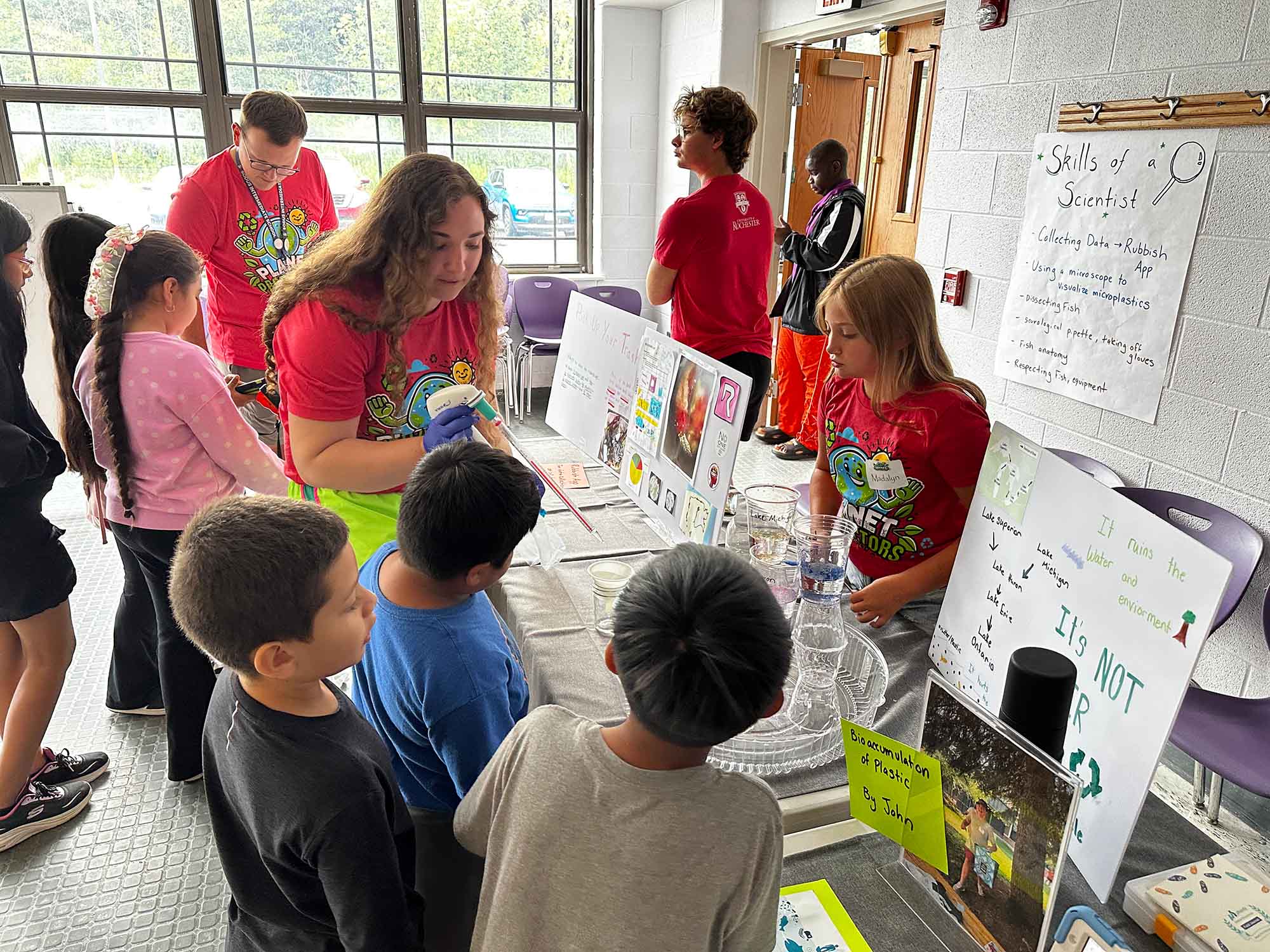
Created and led by April Luehmann, an associate professor of teaching and curriculum and the director of the science teacher education program, Get Real! Science builds authentic partnerships in rural communities through immersive, hands-on science investigations. Participants engage in research projects that connect learning to local environments and community issues. For example, students have collected and compared soil samples from fields that farmers describe as growing “good” versus “great” strawberries, tested water quality in nearby drainage ditches that students once drank from and described as “better than Gatorade,” explored local invasive species using the citizen science app iNaturalist, and analyzed sand and water samples from a nearby bay to study microplastics.
“We start with their needs and what makes them special,” Luehmann says. “We listen first, then build science around what matters most to them in their community.”
The program’s rural focus began a decade ago when alumna Ellen Lloyd ’10W (EdD) invited Luehmann and her graduate students to visit Sodus Jr./Sr. High School in Wayne County, east of Rochester. Together, they later created community-based science camp experiences exploring issues such as water quality, invasive species, and microplastics. Students share their findings at public showcases.
“These experiences not only build scientific literacy but also empower students to take pride in their community and see themselves as active contributors to its well-being,” Luehmann adds. “When kids teach adults about what they’ve learned, it’s a powerful form of community education.”
Since moving to Sodus, the camp has served nearly 300 students and trained more than 50 pre-service teachers. Luehmann has also partnered with the Marion Central School District, also in Wayne County, to integrate similar hands-on investigations into the eighth-grade Life Science and twelfth-grade AP Biology curricula. Together with two Warner graduates, Luehmann co-designed a five-week science investigation project in which AP Biology students published their research in the Journal of Emerging Investigators.
These experiences build scientific literacy and empower students to see themselves as scientists and contributors to their communities.
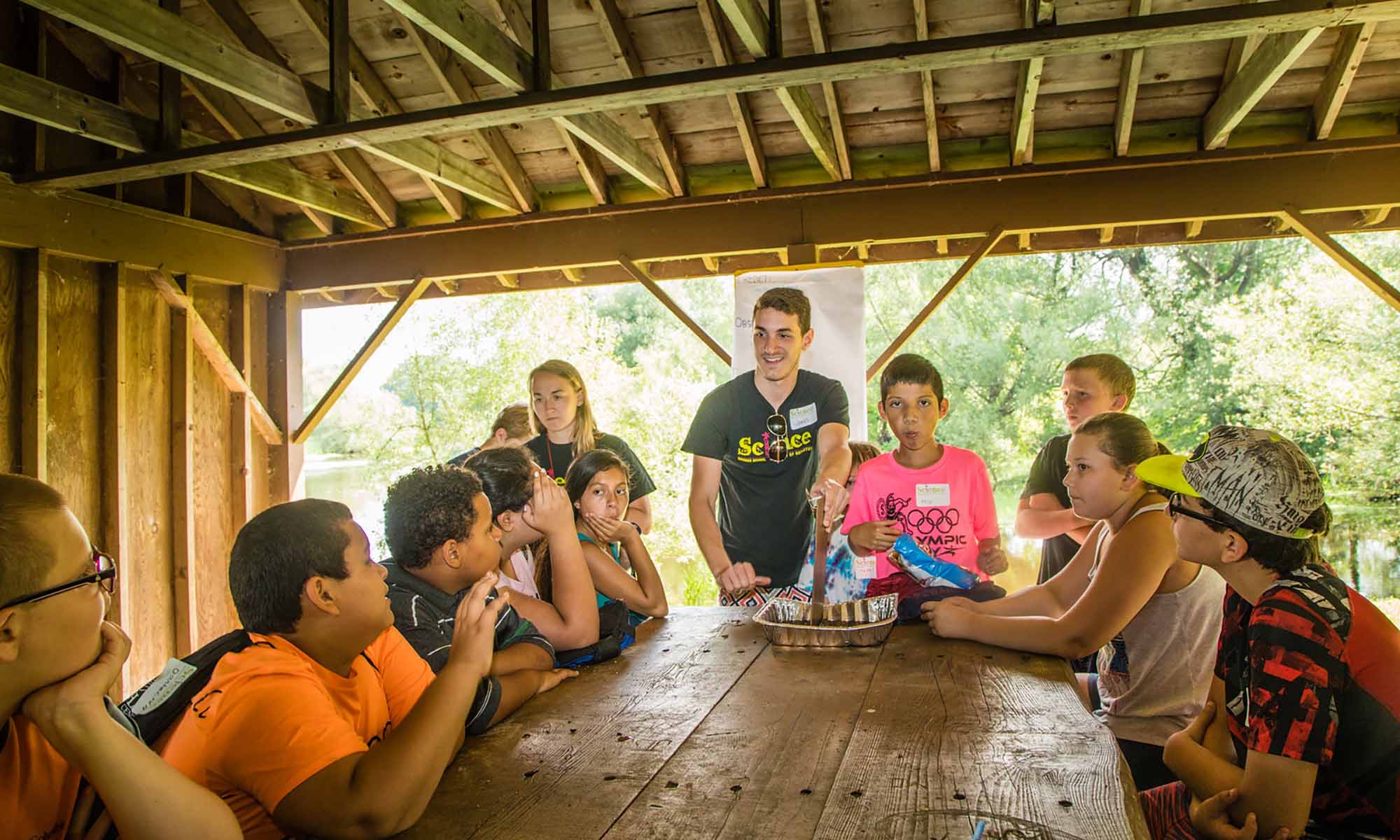
Supporting mathematics education
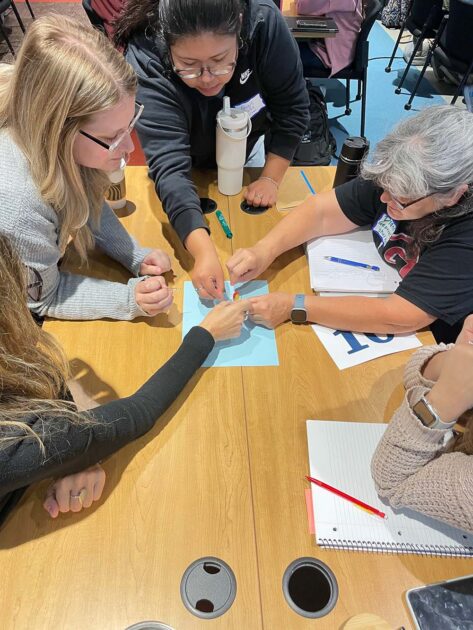
Through SyncOn for Teachers and SyncOn for Coaches programs, Warner has made significant strides in rural mathematics education. Funded by the National Science Foundation (NSF), these programs have provided multi-year professional development to about 70 rural educators, helping them strengthen instruction and mentor peers. Collectively, these teacher-leaders reach hundreds of students annually in their classrooms and benefit thousands more through their coaching.
“In rural areas, it’s harder for teachers to access high-quality professional learning because they’re farther from universities and have fewer colleagues nearby,” says Jeffrey Choppin, a professor of teaching and curriculum. “SyncOn bridges that gap through synchronous, online professional development tailored to rural educators.”
The models developed through SyncOn have been adopted in other states, creating a ripple effect that broadens their reach. Building on this success, Choppin’s Rural Mathematics Education Landscape, funded by NSF in 2023, studies the conditions and challenges of rural middle school mathematics education to inform future professional learning.
Warner aims to build on this work by fostering networks among rural educators, exploring innovative tools such as AI for teacher feedback, and ensuring that rural students have access to rigorous, high-quality mathematics instruction.
Expanding STEM learning through strategic partnerships
The Center for Professional Development and Education Reform (CPDER) extends Warner’s reach through partnerships with BOCES and other organizations. One key initiative, the NSF Noyce Master Teaching Fellowship (MTF) program, evolved during the pandemic to become more accessible to rural educators.
“We learned how to better serve and develop leaders in rural communities,” says Michael Daley, CPDER director and an associate professor (clinical). “The program now connects teachers across Idaho and New York, fostering a network of teacher-leaders driving impactful changes in their communities.”
For instance, Jonathan Pragle, a Noyce MTF alum who is now a teacher at the Marcus Whitman Central School District in Ontario County, established a maple sugar operation on campus that engages students from kindergarten through high school in hands-on science.
“He [Pragle] really uses the resources of a rural community, highlighting the program’s emphasis on leveraging local assets,” Daley says.
Nearly 70 teachers have participated in the Noyce MTF, almost half from rural districts. The Northeast Noyce Professional Learning Network has also emerged as a powerful platform for collaboration, hosting conferences and workshops that connect educators across the region.
“We built the Network to be accessible to all STEM teachers in the Northeast through purposeful design,” Daley says. “Traveling to a major city for a conference can be very challenging for teachers in rural communities. We made sure there were opportunities close to them, along with online professional learning opportunities.”
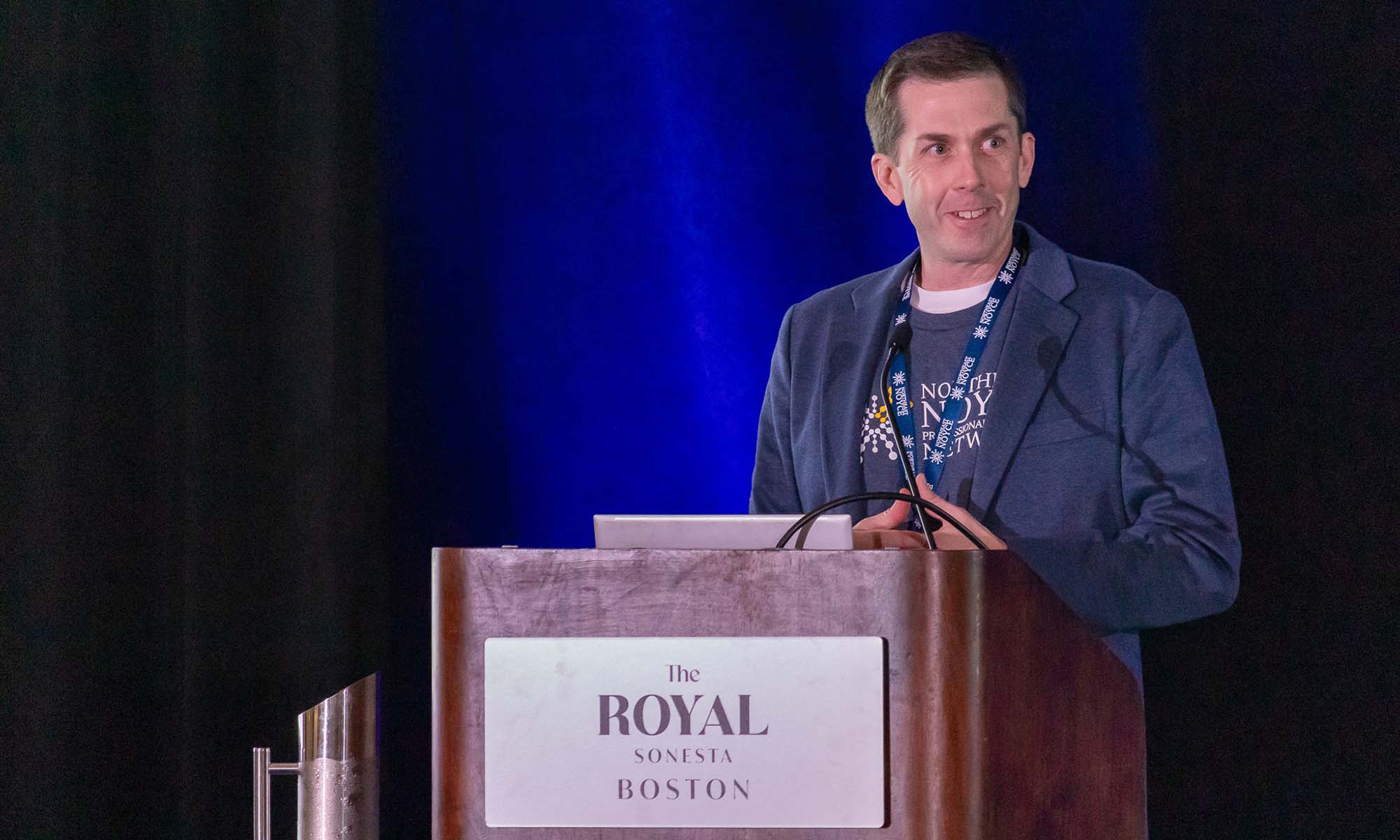
CPDER’s Teacher Leadership Cadres, offered in partnership with Wayne-Finger Lakes BOCES and BOCES 4 Science, provide powerful professional learning experiences for teacher leaders in math, science, and social studies. In addition, the Center’s Leadership Coaching programs—developed in collaboration with Wayne-Finger Lakes BOCES, Erie 2-Chautauqua Cattaraugus BOCES, and Greater Southern Tier BOCES—serve about 200 leaders each year, including those from 20 rural districts, helping schools identify strengths, address needs, and sustain growth.
Most recently, Warner and Boise State University received an NSF grant, supported by the Micron Foundation, to empower K–12 STEM educators as leaders in the rapidly expanding microelectronics and semiconductor industries.
“I am from a rural community, and I connect deeply with the challenges rural districts face,” says Daley, who recently became a board member of the Rural Schools Association of New York.
Through these collective efforts, Warner continues to bridge higher education and rural schools—advancing opportunity, innovation, and leadership across New York State and beyond.

